I went hands-on with the Thermomix TM7 – the all-in-one appliance that can cook just about anything
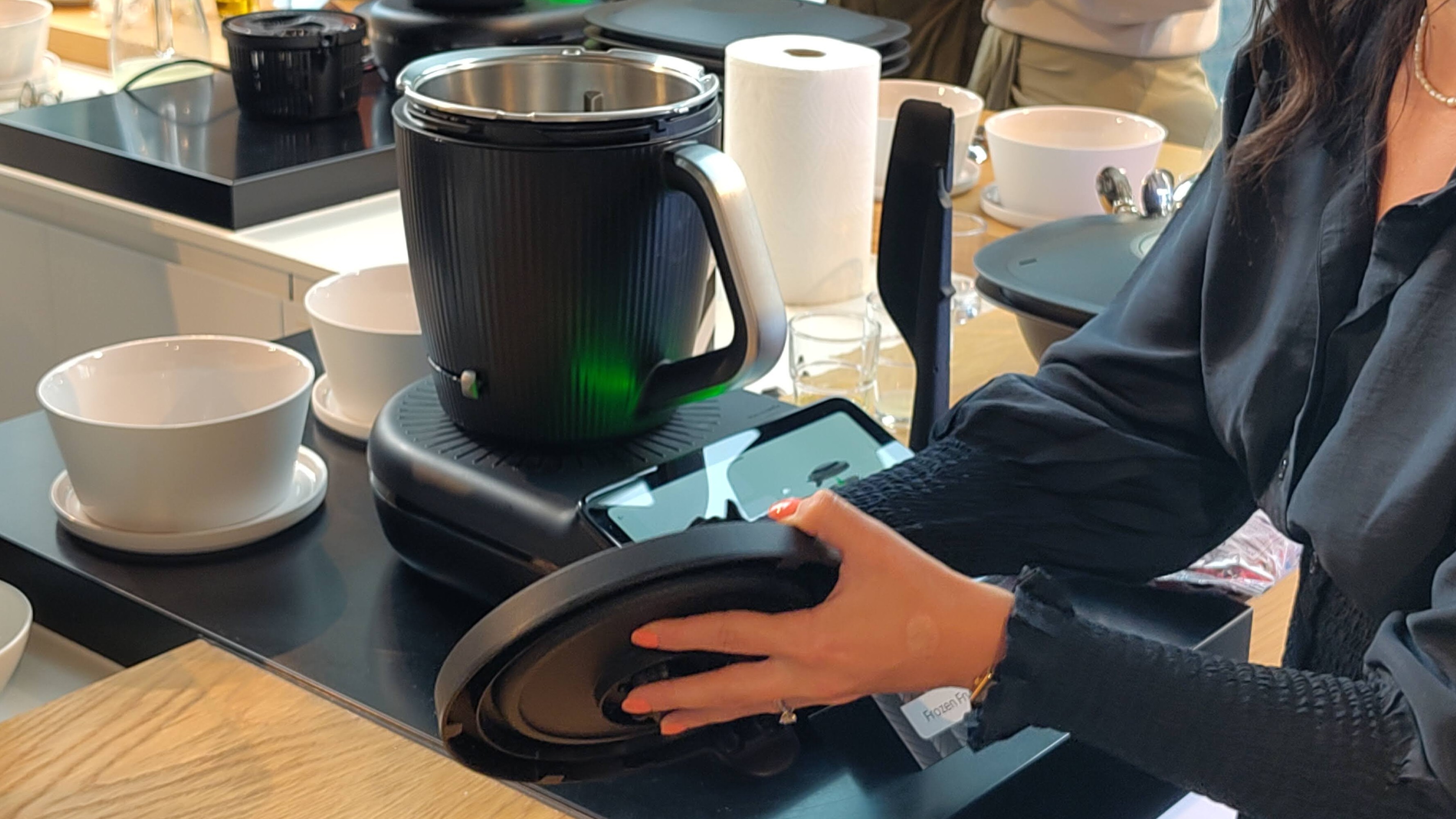
If you're a bit of a kitchenware geek (guilty as charged) then you might be familiar with the name Thermomix. It's a unique appliance that's somewhere between a multi-cooker, a food processor, a blender, a steamer, and a recipe book – and it can prepare virtually any dish you can think of.
I recently had the chance to go hands-on with the latest version of the Thermomix, the TM7, in the airy London showroom of manufacturer Vorwerk. So what exactly is it, and how does it work?
The heart of the TM7 is a base containing the motor for the blade, heating element, and weighing scale (more on that shortly), with a large touchscreen on the front. It's quite compact, and has a footprint around the same size as that of a typical air fryer.
On top of this sits a large mixing bowl, with a matte black finish (as requested by the company's customers in a survey), a brushed metal handle, and a lid. The bowl is insulated so it's never hot to the touch, and your food is kept at the correct temperature.
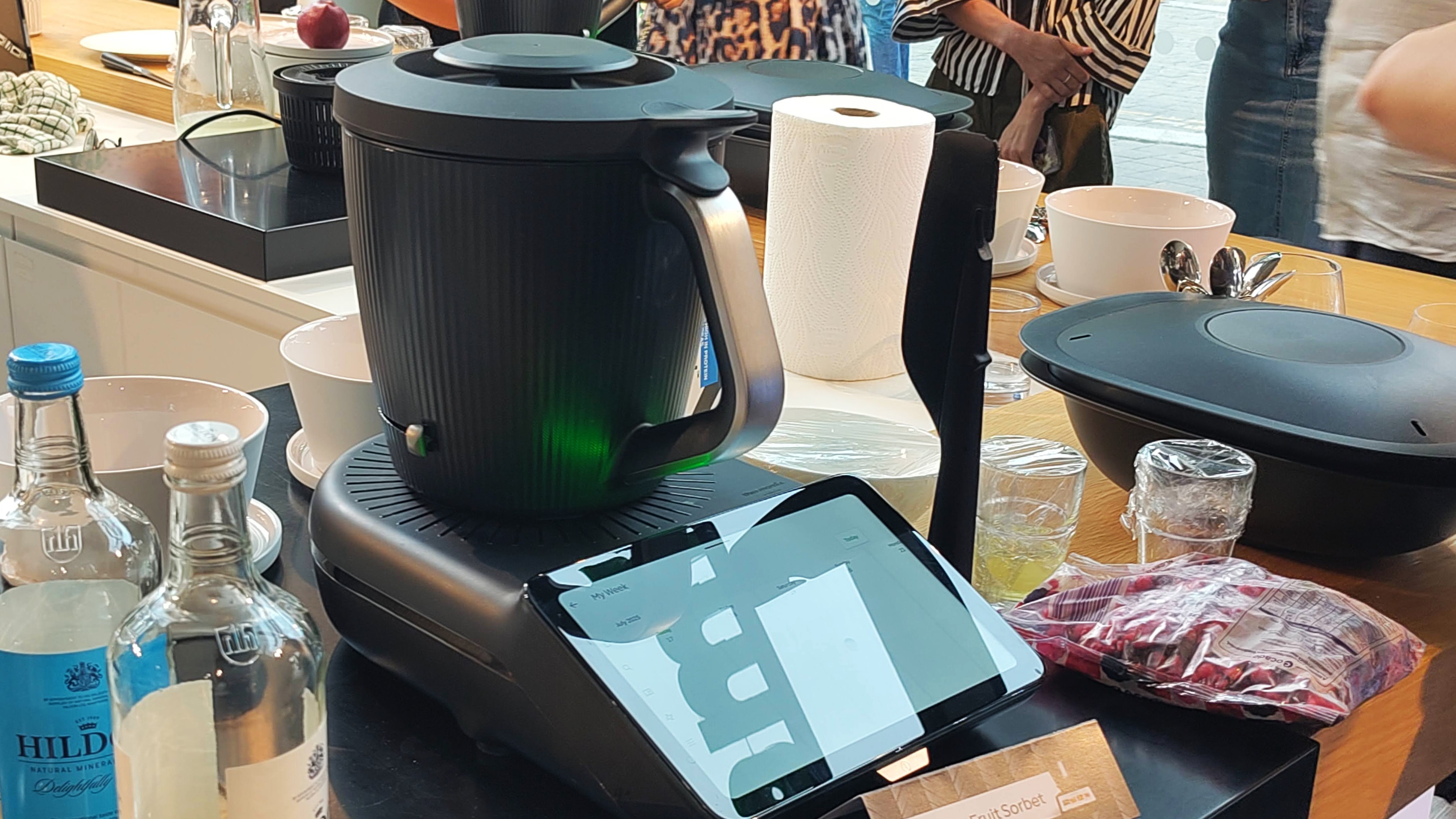
Inside the bowl is a blade similar to the kind you'd find in a conventional food processor, but which is sharp on one side and blunt on the other. Spinning in one direction will chop or blend ingredients, while turning the other way will stir them.
One feature that's new for the TM7 is the ability to cook with the lid of the bowl removed. This is ideal for cooking delicate ingredients, and for safety it's only possible when using one of the slowest 'stir' modes. In any other mode, the blade will stop automatically when the lid is removed.
Occasionally you'll need to scrape ingredients off the sides and back onto the blade, and the TM7 comes with a specially designed spatula that fits perfectly against the side of the bowl for this purpose. The spatula can sit on its side, or upright on its base when not in use to avoid dirtying your kitchen counters.
Sign up for breaking news, reviews, opinion, top tech deals, and more.
There's also a steamer, called the Varoma, which sits on top of the bowl to steam dishes like fish and vegetables, with two layers for cooking two things at once.
How does it work?
One of the most important parts of the Thermomix TM7 is the companion app, called Cookidoo, which is home to thousands of tried and tested recipes. This isn't your usual digital cookbook though; once you've found a dish you like, you can send it to your Thermomix, which will then walk you through each step of the process and handle all the time-consuming tasks for you.
For example, if you're preparing a risotto (as we were shown in Vorwerk's demonstration), the touchscreen might prompt you to add an onion to the bowl, then press the play button to have it perfectly chopped. You might then be asked to add a slug of olive oil, and when you've pressed a button the confirm that it's in the bowl, the Thermomix will begin cooking the chopped onion while stirring, softening it to perfection. There's no need to dirty multiple pans, knives, and a chopping board.
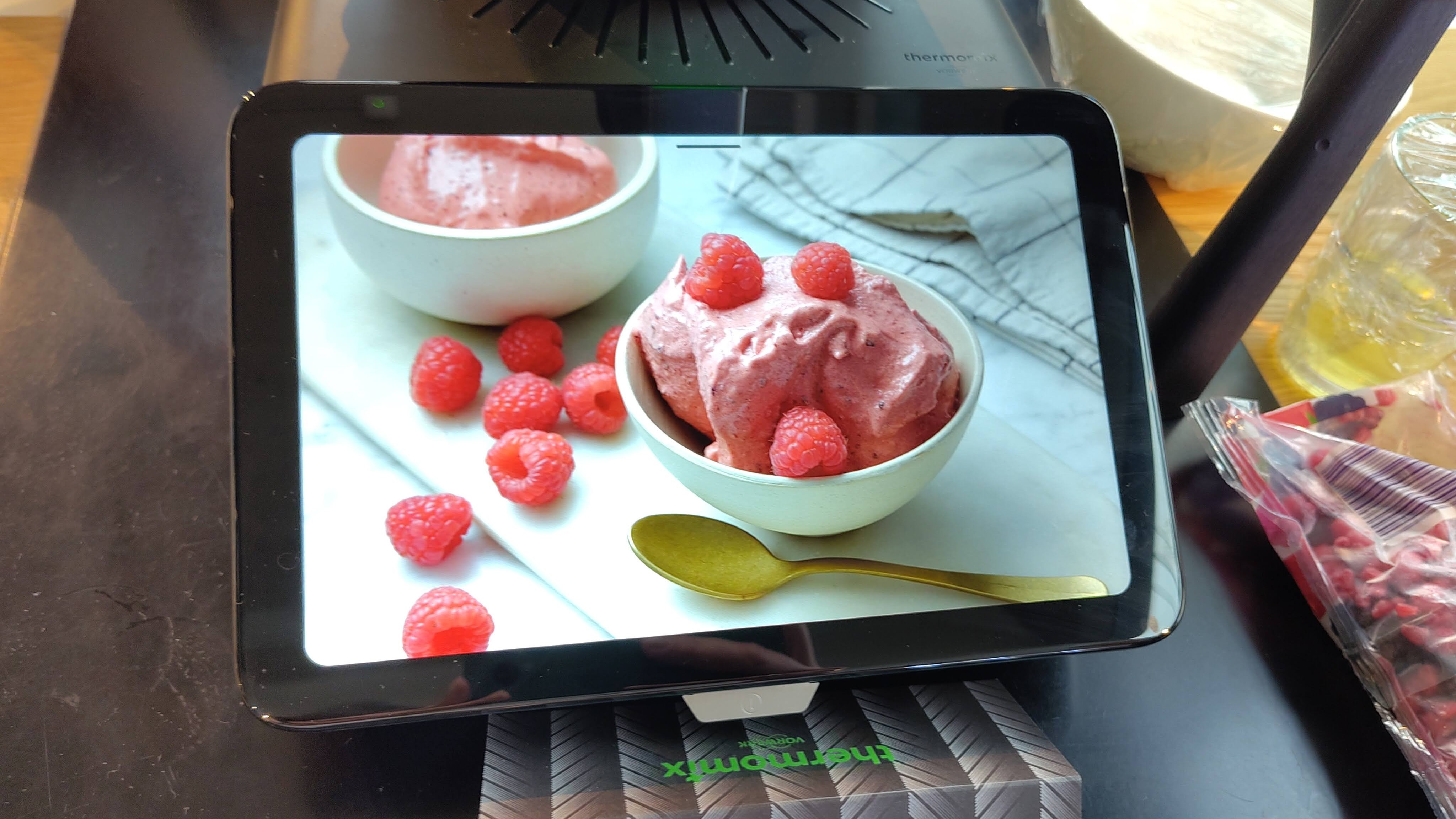
When the onion is cooked, you'll be prompted to add risotto rice (the built-in scale will tell you when there's enough in the bowl), a stock cube, and water, before the Thermomix takes over the long process of stirring the risotto to release starch while it cooks. Meanwhile, you can safely leave it and do other things. The Thermomix will chime if you need to add more ingredients, or when cooking is finished.
Once you're done, the bowl, blade, spatula, and lid are all dishwasher-safe, so cleanup is a piece of cake.
Speaking of which, if you want to cook something that's not sauteed, stewed, boiled, fried or steamed (like cake or bread), the Thermomix can still handle the weighing and mixing, and will tell you what to pre-heat the oven to and how long to bake it for.
So what's it like to use?
At the event, one of Vorwerk's cooks demonstrated how to prepare a prosciutto and porcini risotto using the TM7, as described above. Unless it's doing something like grating a hard chunk of parmesan, it's surprising just hoe quiet the machine is in use, thanks to its insulated bowl.
Once that was done, the attendees (about 20 of us) were split into four groups, and tasked with preparing four different recipes. My group was assigned a berry sorbet, which was particularly interesting to me because I'd seen pictures online of chilled desserts prepared using a Thermomix.
It's important to note that the Thermomix doesn't actively chill ingredients, so they need to be frozen before going inside the bowl. For our sorbet, we used mixed frozen berries (a staple of my tests when I'm reviewing the best blenders for making smoothies, and often tricky to fully pulverize).
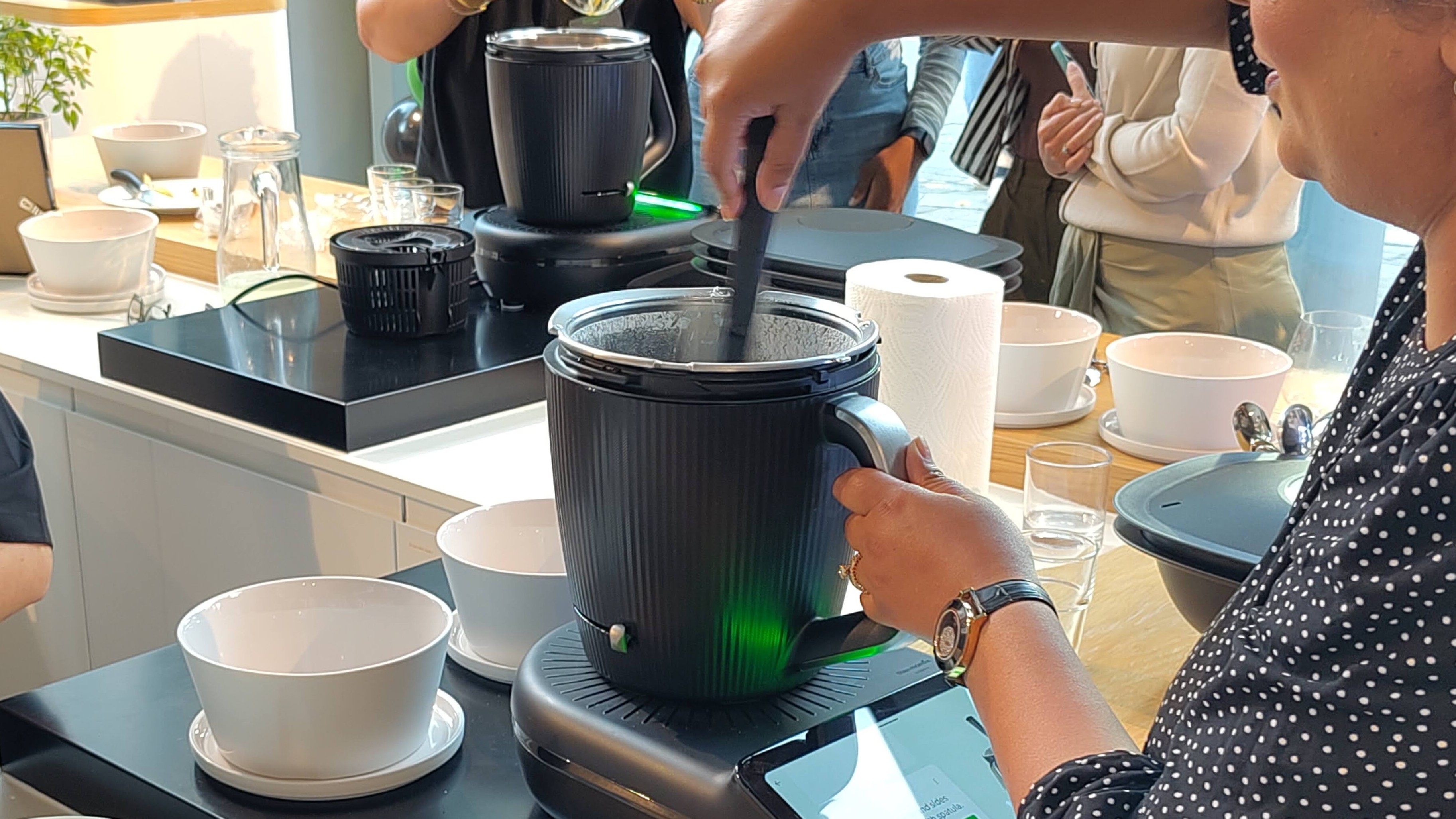
First we added granulated sugar to the bowl until a green tick appeared to show that we had the correct amount, placed the lid on top, and pressed play. Within a few seconds, the Thermomix blitzed the grains into powdery icing/confectioner's sugar. I certainly wasn't expecting that, and was very impressed – I always have granulated sugar to hand, but more than once I've had to make a late night dash to the corner shop for icing sugar when baking a birthday cake.
After that, we added the berries and a dash of lemon juice to balance the sweetness, then let the Thermomix take the reins. We were occasionally prompted to scrape the ingredients off the sides of the bowl, but after a couple of minutes we were left with a fresh, smooth sorbet, with only three ingredients and virtually no effort of mess.
The cooking didn't end there, though. After our guide scooped half the sorbet into a bowl for tasting (delicious) and replaced the bowl, the machine prompted us to add an egg white, and insert a beating tool that sits on top of the blade. the TM7 then whipped the egg and sorbet together to make a smooth, frothy mousse-like dessert.
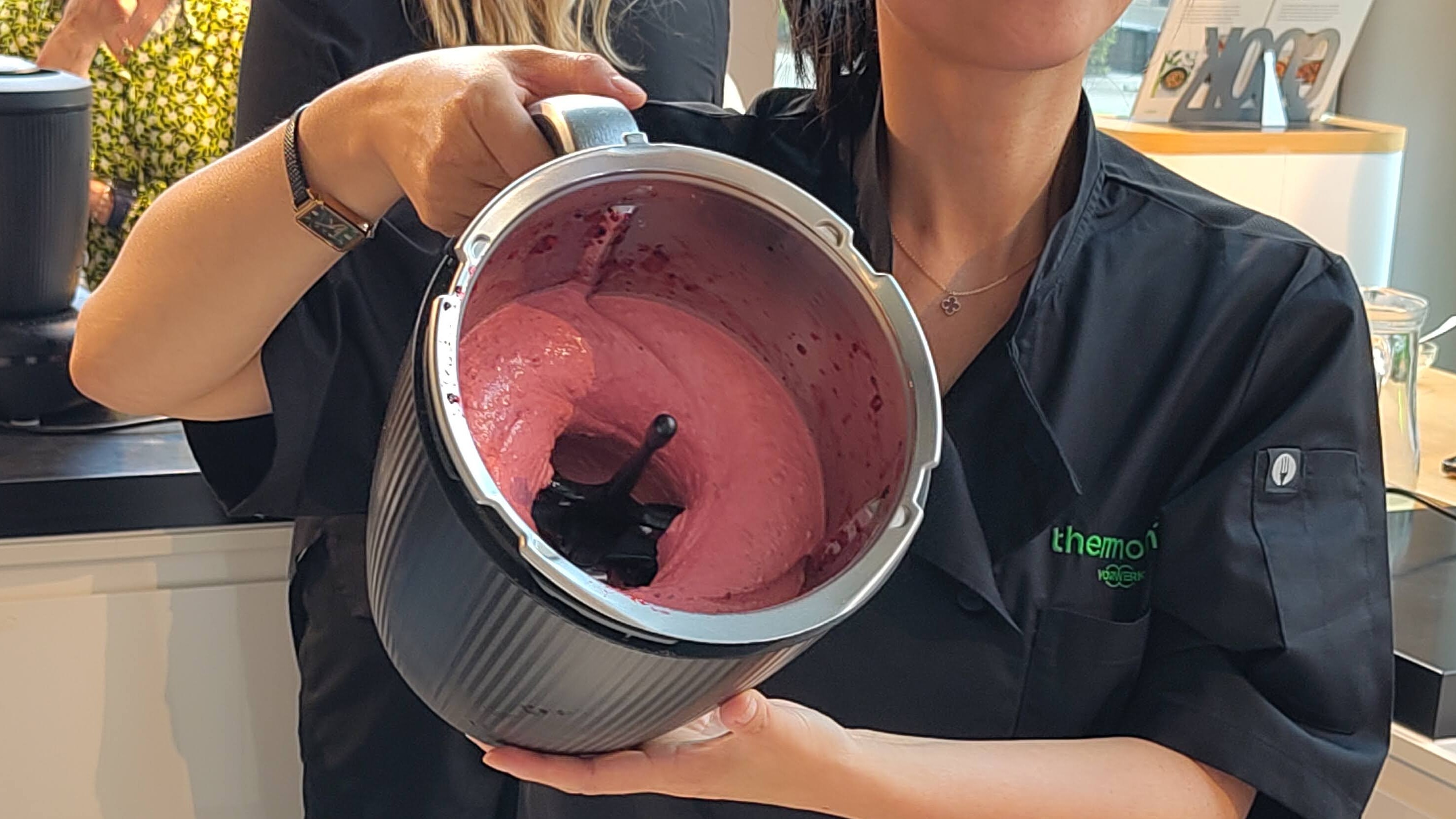
Finally, the demo recipe prompted us to remove all but two tablespoons of sorbet, add a portion of milk, and replace the lid. A few seconds later, we each had a glass or berry milkshake to round off dessert.
It's very impressive, and I particularly like the fact that the Cookidoo app comes with sets of recipes made specifically for certain countries, including local cuisines (I spotted a recipe for Yorkshire puddings) and using readily available ingredients.
The Thermomix TM7 certainly isn't cheap, costing £1,349 from Vorwerk in the UK (it's due to launch in the US later this year, but the official price hasn't been announced yet) and you should also factor in the premium Cookidoo subscription, which is an extra $65/£50 per year.
I asked Vorwerk's representative whether it's possible to use the TM7 without it, and although you can, you'll have a much smaller selection of recipes to choose from, and you won't be able to do things like add notes to recipes you've tried.
It's a seriously powerful and capable appliance though, and as someone who cooks using online recipes almost every day, I can easily see it having a place in my kitchen. It's made to last too. In fact, Vorwerk only releases a new model every seven years or so, so you can be confident it'll be supported for a long time.
I'll soon be borrowing a TM7 for a week to try even more recipes, and will report back to let you know how I get on with stewing, baking, and more – and whether I think it's worth the investment.
You might also like

Cat is TechRadar's Homes Editor specializing in kitchen appliances and smart home technology. She's been a tech journalist for 15 years, having worked on print magazines including PC Plus and PC Format, and is a Speciality Coffee Association (SCA) certified barista. Whether you want to invest in some smart lights or pick up a new espresso machine, she's the right person to help.
You must confirm your public display name before commenting
Please logout and then login again, you will then be prompted to enter your display name.